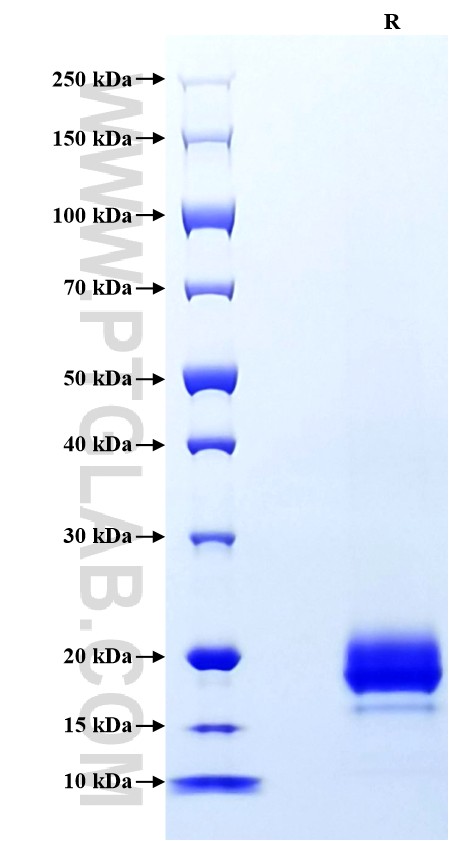Recombinant Mouse VEGF120 protein (His Tag)
种属
Mouse
纯度
>90 %, SDS-PAGE
标签
His Tag
生物活性
未测试
验证数据展示
产品信息
| 纯度 | >90 %, SDS-PAGE |
| 内毒素 | <0.1 EU/μg protein, LAL method |
| 生物活性 |
Not tested |
| 来源 | HEK293-derived Mouse VEGF120 protein Ala27-Arg146 (Accession# Q00731-3) with a His tag at the N-terminus. |
| 基因ID | 22339 |
| 蛋白编号 | Q00731-3 |
| 预测分子量 | 15.2 kDa |
| SDS-PAGE | 16-22 kDa, reducing (R) conditions |
| 组分 | Lyophilized from 0.22 μm filtered solution in PBS, pH 7.4. Normally 5% trehalose and 5% mannitol are added as protectants before lyophilization. |
| 复溶 | Briefly centrifuge the tube before opening. Reconstitute at 0.1-0.5 mg/mL in sterile water. |
| 储存条件 |
It is recommended that the protein be aliquoted for optimal storage. Avoid repeated freeze-thaw cycles.
|
| 运输条件 | The product is shipped at ambient temperature. Upon receipt, store it immediately at the recommended temperature. |
背景信息
VEGFA (vascular endothelial growth factor A) is a cytokine that is a member of the VEGF-A family. VEGF120 is an isoform of the VEGF-A gene produced by selective splicing, and is highly diffusible due to the lack of a heparin-binding domain. VEGF120 plays an important role in angiogenesis and the proliferation, migration, and survival of vascular endothelial cells. In addition, VEGF120 is essential for the formation of the cardiovascular system during embryonic development and is also involved in tissue repair and regeneration in the adult. In the nervous system, VEGF120 inhibits apoptosis of retinal neurons, showing its protective effect on nerve cells.
参考文献:
1. Claesson-Welsh, L, and M Welsh. Journal of internal medicine vol. 273,2 (2013): 114-27. 2. White, Amanda Louise, and Gregory Jaye Bix. Biomolecules vol. 13,4 702. 20 Apr. 2023. 3. Ni, Hongzao et al. Phytotherapy research : PTR vol. 36,4 (2022): 1736-1747. 4. Nishijima, Kazuaki et al. The American journal of pathology vol. 171,1 (2007): 53-67.


